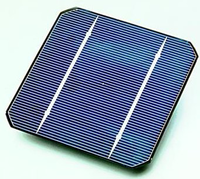Photoelectric cell

A photoelectric cell is a device that can sense light and turn it into electricity. Imagine that you are holding a toy car that has solar panels on the roof. When you place the car outside in the sun, the panels convert the sunlight into electricity, which makes the car move. That's basically how a photoelectric cell works!
Photoelectric cells are used in many different ways. For example, they can control streetlights by sensing when it gets dark outside and turning the lights on. They are also used in cameras to capture images, and in solar panels to generate electricity for homes and businesses.
To understand how a photoelectric cell works, think of it like a tiny battery. Inside the battery, there are two parts called electrodes separated by a material called electrolyte. When you connect the electrodes with a wire, electricity flows from one end to the other.
A photoelectric cell also has two electrodes, but they are made of a special material that responds to light. When light hits one of the electrodes, it causes electrons (tiny particles inside atoms) to jump from the material and travel to the other electrode. This creates a flow of electricity, which can be used to power things like lights, sensors, or even small motors.
So, in summary, a photoelectric cell is a device that can turn light into electricity. It does this by using special materials that respond to light and create a flow of electrons. These cells are used in many different ways, from controlling streetlights to powering homes with solar panels.
Photoelectric cells are used in many different ways. For example, they can control streetlights by sensing when it gets dark outside and turning the lights on. They are also used in cameras to capture images, and in solar panels to generate electricity for homes and businesses.
To understand how a photoelectric cell works, think of it like a tiny battery. Inside the battery, there are two parts called electrodes separated by a material called electrolyte. When you connect the electrodes with a wire, electricity flows from one end to the other.
A photoelectric cell also has two electrodes, but they are made of a special material that responds to light. When light hits one of the electrodes, it causes electrons (tiny particles inside atoms) to jump from the material and travel to the other electrode. This creates a flow of electricity, which can be used to power things like lights, sensors, or even small motors.
So, in summary, a photoelectric cell is a device that can turn light into electricity. It does this by using special materials that respond to light and create a flow of electrons. These cells are used in many different ways, from controlling streetlights to powering homes with solar panels.
Related topics others have asked about:
